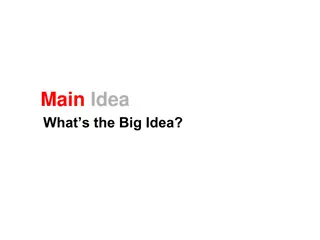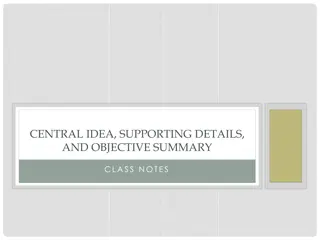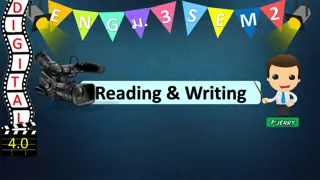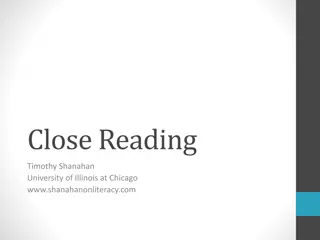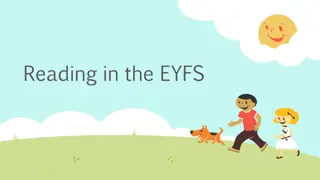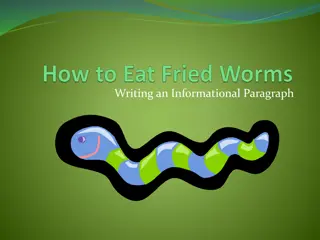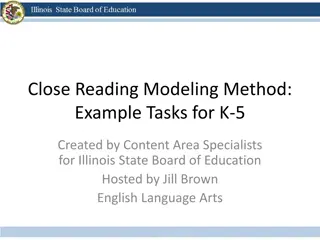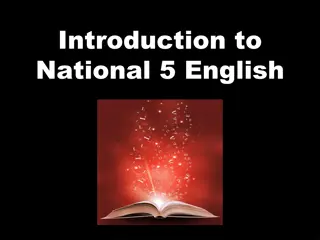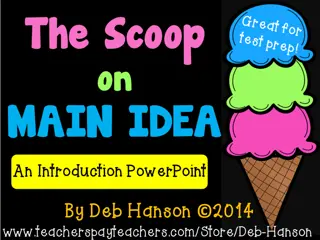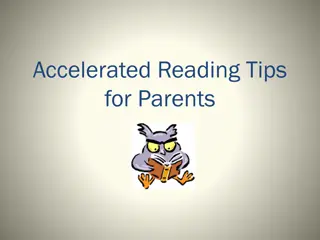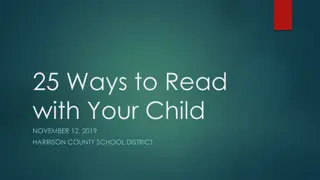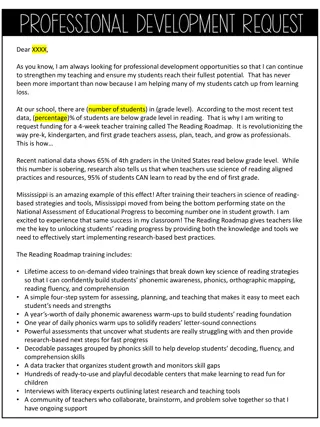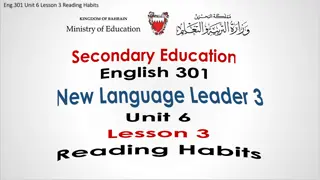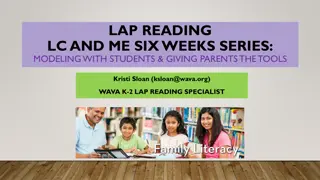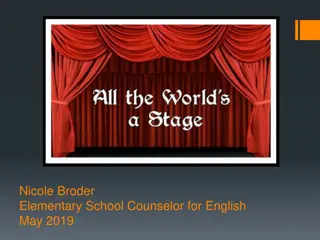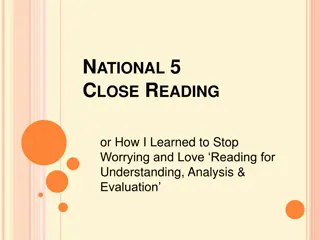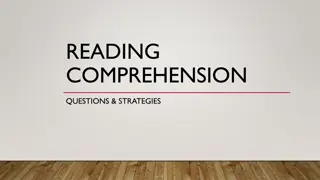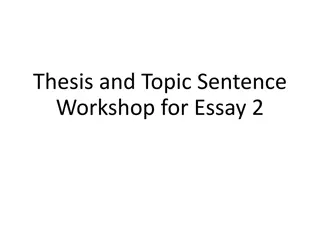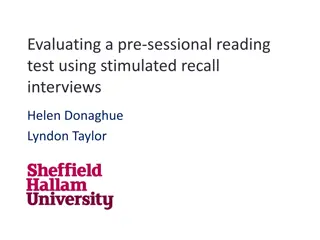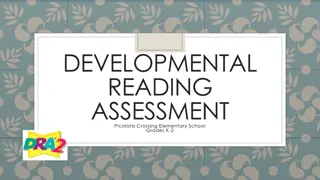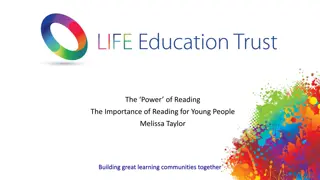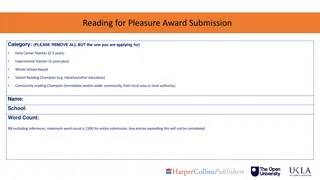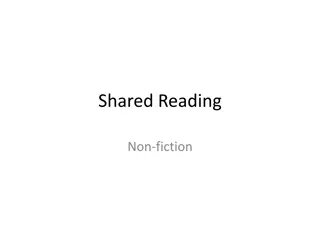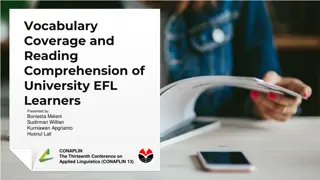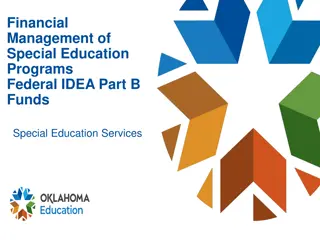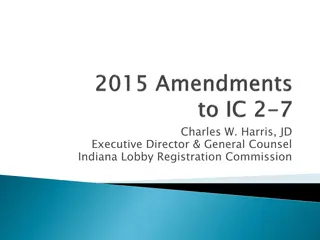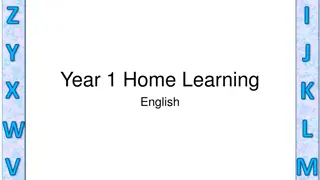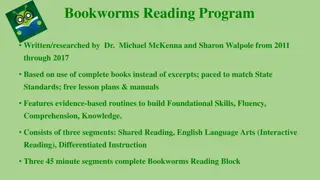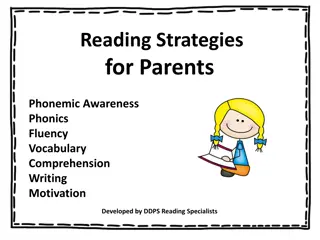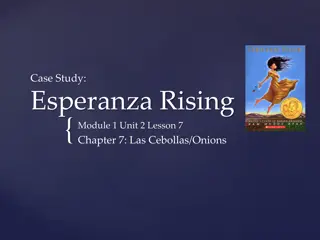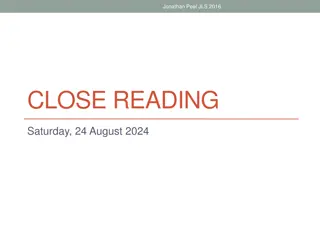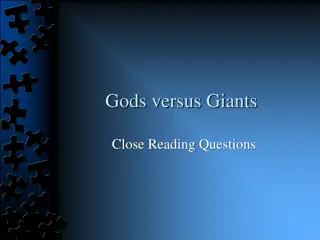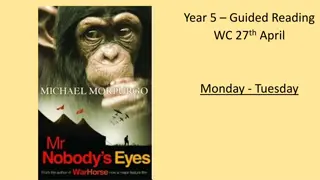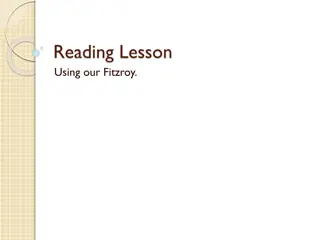Understanding Topic, Main Idea, and Supporting Details in Close Reading Activities
Learn how to distinguish between the topic and main idea in paragraphs, identify the best supporting details, and practice through examples like analyzing the motivations behind extreme actions during World War II. Explore the difference between topics and main ideas using clear explanations and familiar examples, enhancing your comprehension skills for effective reading and analysis.
Download Presentation

Please find below an Image/Link to download the presentation.
The content on the website is provided AS IS for your information and personal use only. It may not be sold, licensed, or shared on other websites without obtaining consent from the author. Download presentation by click this link. If you encounter any issues during the download, it is possible that the publisher has removed the file from their server.
E N D
Presentation Transcript
Close Reading: Activity 1 Lesson 3 Identifying topic, main idea, and best supporting details
Essential Question of the Unit What were the political, economic, and social motivations that contributed to the extreme actions taken by the United States, Germany, and Japan during WWII?
Warm Up Read this paragraph. Choose the one or two words to best describe what this paragraph is all about. During World War II, ghettos were city districts (often enclosed) in which the Germans concentrated the municipal and sometimes regional Jewish population and forced them to live under miserable conditions. Ghettos isolated Jews by separating Jewish communities from the non-Jewish population and from other Jewish communities. The Germans established at least 1,000 ghettos in German-occupied and annexed Poland and the Soviet Union alone. German occupation authorities established the first ghetto in Poland in Piotrk w Trybunalski in October 1939.
Warm Up The one word this paragraph is all about is: a. Cities b. Germans c. Jews d. Ghettos This is called the topic of the paragraph. In this lesson we ll look at how the topic of a paragraph is different from the main idea of the paragraph. Then we ll identify how to find the BEST supporting details.
Topic VS Main Idea There is a difference between the topic and the main idea. A topic can be stated in one or two words or a phrase and refers to the subject of the paragraph. A main idea states the topic of the paragraph AND also explains the author s point or perspective regarding that topic. The main idea must be stated in a complete sentence. The main idea must present a complete thought about a topic.
Topic VS Main Idea Not sure of the difference? Use your prior knowledge and think of what you do know of topic and main idea. Let s use an example from a movie. Most people are familiar with the movie Beauty and the Beast. The topic of Beauty and the Beast is first impressions. The main idea of Beauty and the Beast is that first impressions can be deceiving and the true beauty of a person comes from within.
Lets practice. 1. Smoking has been proven dangerous to people s health, yet many continue to smoke for various reasons. For young people, smoking often represents maturity and individuality. Many smoke as a way to reduce tension. In addition, the regular smoker becomes addicted psychologically and physically to the nicotine in cigarettes. Topic: a. b. health smoking c. addiction d. nicotine Main Idea: a. b. c. d. Smoking has been proven dangerous to people s health in various ways. Regular smokers become addicted to nicotine. Although smoking is dangerous, people continue doing it for various reasons. Nicotine is what smokers become addicted to both psychologically and physically. (Langan 29)
Correct Answers The topic is b: smoking The main idea is c: Although smoking is dangerous, people continue doing it for various reasons.
How to Find the Main Idea In a paragraph, a main idea statement is called the topic sentence. In a longer selection, a main idea statement is called a thesis. In a paragraph, the main idea may be the first or last sentence. Sometimes it is in the middle of the paragraph. In a longer selection, look carefully at the first paragraph or two, not just the first sentence. Sometimes, the main idea will be implied. In which case you need to identify the topic, examine the supporting details and come up with the statement on your own using your own words to express the message the author is trying to get you to understand.
Supporting Details Details explain and elaborate upon the main idea. They are specific. Careful consideration of each detail will help you to choose the one detail that BEST supports the main idea. Often this detail is discussed first within the given text.
Lets practice. Let s read this example. There is some evidence that colors affect you physiologically. For example, when subjects are exposed to red light respiratory movements increase; exposure to blue decreases respiratory movements. Similarly, eye blinks increase in frequency when eyes are exposed to red light and decrease when exposed to blue. This seems consistent with intuitive feelings about blue being more soothing and red being more arousing. After changing a school s walls from orange and white to blue, the blood pressure of the students decreased while their academic performance improved. What s the topic? What s the main idea? What are the supporting details? (DeVito, qtd. in McWhorter 136)
Correct Answers Topic: Colors Main Idea: There is some evidence that colors affect you physiologically. Supporting Details: For example, when subjects are exposed to red light respiratory movements increase; exposure to blue decreases respiratory movements. Similarly, eye blinks increase in frequency when eyes are exposed to red light and decrease when exposed to blue. This seems consistent with intuitive feelings about blue being more soothing and red being more arousing. After changing a school s walls from orange and white to blue, the blood pressure of the students decreased while their academic performance improved.
Choosing the BEST support Which of these supporting details BEST supports the main idea that there is some evidence that colors affect you physiologically? a. For example, when subjects are exposed to red light respiratory movements increase; exposure to blue decreases respiratory movements. a. Similarly, eye blinks increase in frequency when eyes are exposed to red light and decrease when exposed to blue. This seems consistent with intuitive feelings about blue being more soothing and red being more arousing. a. After changing a school s walls from orange and white to blue, the blood pressure of the students decreased while their academic performance improved.
Correct Answers The BEST supporting detail for the main idea that there is some evidence that colors affect you physiologically: a. For example, when subjects are exposed to red light respiratory movements increase; exposure to blue decreases respiratory movements. This is the best example because it is shows a direct correlation between the lights and physiological reactions. The other two examples show a weaker correlation.
Close Reading: Activity 2 Identifying topic, main idea, and best supporting details
Close Reading As an active reader, you must search for the sentence that states the central point of the paragraph or selection. You should closely read the paragraph or selection to help you identify the main idea and supporting details. We will practice close reading of a text to help us find the topic, main idea and best supporting details within a longer reading selection. First, I will read through and model aloud my thinking. Then we will practice an example together. Finally, you will do one on your own to demonstrate your understanding and mastery of this skill.
Questions to Guide Close Reading Use text dependent questions to guide thinking as you closely read the selection. By considering these points as you read you arrive at deeper and more complex understandings. Let s work through an example together.
from I Never Saw Another Butterfly Read along in your academic notebook as I read aloud and model the thinking using text dependent questions.
Topic What is the topic of this excerpt?
Correct Answer What is the topic of this excerpt? Theresienstadt Ghetto
Main idea What is the main idea of this excerpt?
Correct Answer What is the main idea of this excerpt? Theresienstadt Ghetto was designed as a way to deceive the world of the atrocities of concentration camps throughout Europe.
Supporting Details Which line from the text BEST supports the main idea?
Correct Answer Which line from the text BEST supports the main idea? Make Terezin a model ghetto, exhibit it as a town inhabited by Jews and governed by them and in which every manner of work is to be done
Practice with a partner Read the next excerpt from I Never Saw Another Butterfly together with a partner. Then talk through the answers to each of the text dependent questions.
Independent Practice Read the next excerpt from I Never Saw Another Butterfly independently. Then think through the answers to each of the text dependent questions.
Notes Now that you ve closely read three excerpts from I Never Saw Another Butterfly consider the possible answer to this question. Take notes in your chart to add to your list of evidence of political, social, and economic factors that motivated each country during World War II. Identify the best statements from the excerpts to support your answer. After reading primary and secondary sources on the political, economic, and social motivations contributing to WWII write an informational/explanatory essay in which you compare and contrast either the political, economic or social motivations of the United States, Germany, and Japan during WWII. Support your discussion with evidence from the text/s.
References "Ghettos." United States Holocaust Memorial Museum. United States Holocaust Memorial Council, 20 June 2014. Web. 28 June 2015. Langan, John. Ten Steps to Advancing College Reading Skills. Second Edition. Marlton, NJ: Townsend Press, 1993. McWhorter, Kathleen. Efficient and Flexible Reading. Ninth Edition. Boston: Pearson/Longman, 2011.


